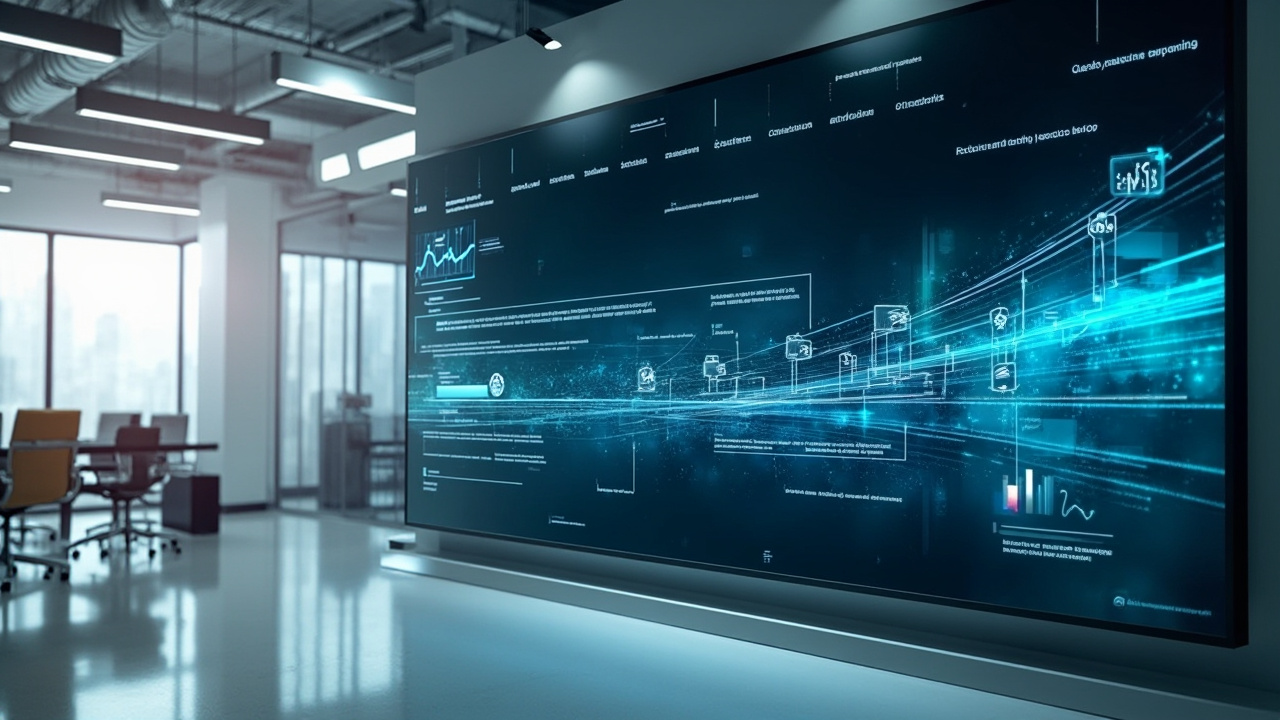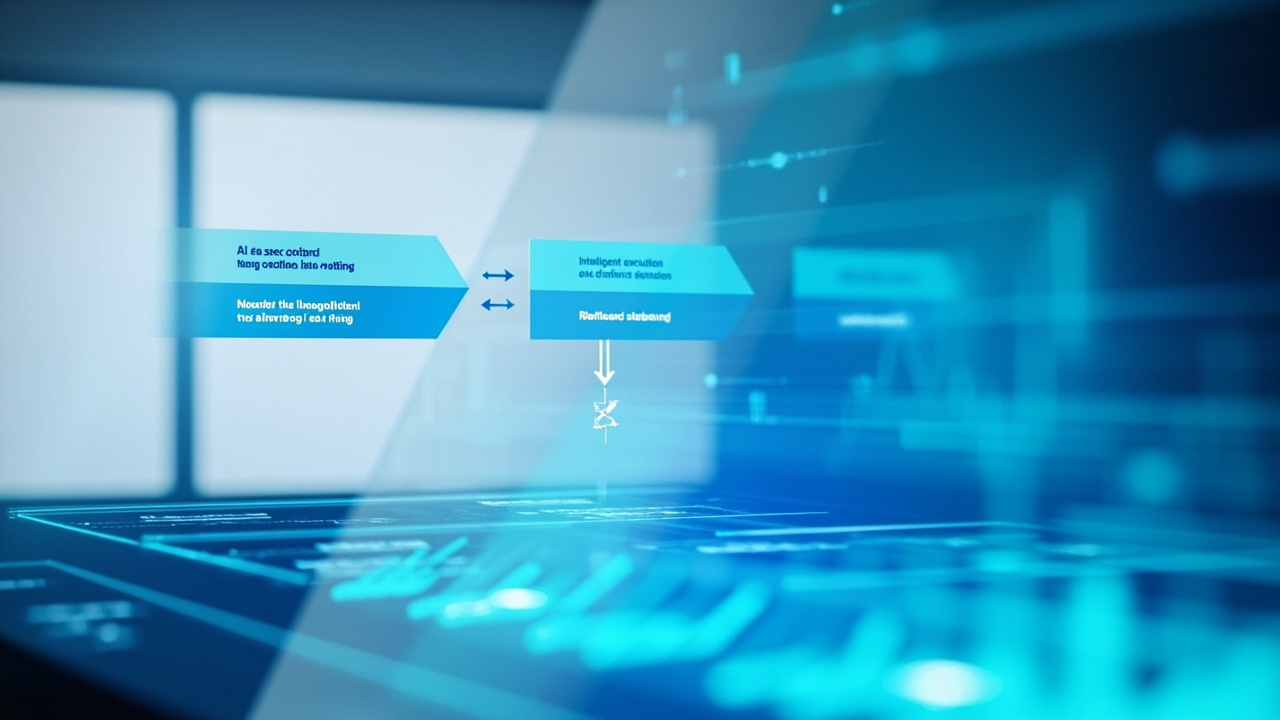In the rapidly evolving world of software development, the importance of robust and efficient testing processes cannot be overstated. As software applications become increasingly complex and diverse, traditional testing methods often fall short, struggling to keep pace with the demands of modern development cycles. In this context, understanding the evolution of software testing and exploring innovative solutions becomes crucial for any organization aiming to deliver high-quality software. This article delves deep into the multifaceted world of software testing, exploring its critical role, challenges, and the transformative impact of advanced tools like GenQE on the testing landscape.
Software development has come a long way from its nascent stages, where basic code reviews and manual testing sufficed. Today, the sheer complexity and speed required in software delivery necessitate more sophisticated testing strategies. This evolution is driven by the need to ensure that applications not only meet functional requirements but also deliver seamless user experiences across a plethora of platforms and devices. However, with this evolution comes the challenge of maintaining thorough and efficient testing processes that can adapt to changing requirements and technologies.
As we delve into this comprehensive exploration of software testing, readers will gain insights into the key methodologies that have shaped the field, the inherent challenges faced by teams today, and the cutting-edge tools and techniques that are paving the way for the future of quality assurance. Whether you’re an experienced tester, a software developer, or an industry enthusiast, this article will equip you with valuable knowledge on the current state and future direction of software testing.
The Fundamentals of Software Testing: A Historical Perspective

Understanding the current landscape of software testing requires a look back at its roots. This section explores the foundational methodologies that have shaped testing practices over the decades.
The Birth of Software Testing
The origins of software testing can be traced back to the early days of computing, where testing was primarily a debugging process. This was a time when software development was linear, following the Waterfall model, which allowed for testing only as a post-development phase. This approach, while effective for small projects, was inefficient for larger, more complex systems as it often resulted in costly and time-consuming rework.
As the industry evolved, so did the need for more structured testing methodologies. The introduction of iterative development models, such as Agile, emphasized the necessity for continuous testing throughout the development lifecycle. This paradigm shift marked the beginning of testing as a distinct and critical discipline within software engineering.
The Rise of Automated Testing
The advent of automation tools in the late 20th century revolutionized software testing. Automated testing allowed teams to execute repetitive tasks and regression tests with speed and precision, reducing human error and freeing up testers to focus on more complex scenarios. However, automation also introduced new challenges, such as maintaining scripts and ensuring they adapted to changes in the application.
Today, automated testing is an integral part of the software development process, enabling teams to achieve faster release cycles and higher quality assurance. Yet, as applications grow more complex, even automation requires augmentation through advanced technologies like artificial intelligence.
“The evolution of software testing from manual to automated processes represents a significant leap in efficiency and accuracy, but it also highlights the need for continuous innovation to keep pace with software complexity.”
Continuous Testing in DevOps
The integration of testing into the DevOps pipeline represents the latest evolution in testing practices. Continuous testing is a practice that involves testing at every stage of the software delivery lifecycle, from development to production. This approach ensures that any defects are identified and addressed as early as possible, reducing the risk of costly errors in later stages.
Continuous testing relies heavily on automation and integration with Continuous Integration/Continuous Deployment (CI/CD) tools. This seamless integration allows for faster feedback loops and higher confidence in software quality, as defects are caught and resolved in near real-time.
Navigating the Challenges of Modern Software Testing

With the evolution of software testing methodologies comes a new set of challenges. This section delves into the complexities faced by modern testing teams and the strategies employed to overcome them.
The Complexity Conundrum
As software applications become more complex, testing teams face the daunting task of ensuring comprehensive coverage across various platforms, devices, and environments. The diversity of user requirements and the rapid pace of technological advancements demand that testing processes be both thorough and adaptable.
Traditional testing approaches often struggle to keep up with this complexity, leading to gaps in coverage and an increased risk of defects slipping through the cracks. To address this, testing teams must adopt more dynamic and flexible testing strategies that can scale with the demands of modern software development.
Managing Resources Efficiently
Resource management is another significant challenge in software testing. With tight deadlines and limited budgets, testing teams must find ways to optimize their efforts without compromising on quality. This involves prioritizing test cases, automating repetitive tasks, and leveraging advanced tools that enhance efficiency.
“In a world where time-to-market is critical, efficient resource management in testing can be the difference between success and failure.”
In this context, AI-powered tools like GenQE offer a significant advantage by automating test case generation and execution, reducing manual effort, and optimizing resource allocation.
Ensuring Security and Compliance
In today’s digital landscape, security and compliance are paramount concerns for software applications. Testing teams must ensure that applications meet stringent security standards and comply with regulatory requirements. This involves conducting thorough security testing and maintaining detailed records to demonstrate compliance.
The integration of security testing into the development pipeline, often referred to as DevSecOps, is becoming increasingly common. This approach ensures that security is a priority throughout the development lifecycle, rather than an afterthought.
The Role of Automation in Modern Testing

Automation plays a crucial role in addressing the challenges of modern software testing. This section explores the benefits and limitations of automation and its impact on testing processes.
Enhancing Efficiency with Automation
The primary benefit of automation is the significant increase in testing efficiency. Automated tests can be executed faster than manual tests, providing quick feedback and enabling rapid iterations. This is particularly beneficial in Agile and DevOps environments, where speed and adaptability are key.
Automation also allows for greater test coverage, as tests can be run across multiple platforms and configurations with minimal additional effort. This ensures that applications are thoroughly tested in a variety of scenarios, reducing the risk of defects.
“Automation is not just about speed; it’s about enabling teams to test smarter, focusing their efforts where it matters most.”
Overcoming Automation Challenges
Despite its benefits, automation is not without challenges. Maintaining automated test scripts can be time-consuming, especially when applications undergo frequent changes. This is where self-healing automation, as offered by platforms like GenQE, becomes invaluable. By automatically adjusting test scripts in response to changes, self-healing capabilities reduce maintenance efforts and minimize downtime.
Another challenge is the initial investment required to set up automation frameworks and tools. However, the long-term benefits of reduced manual effort and faster release cycles often outweigh these initial costs.
The Human Element in Automation
While automation enhances efficiency, it does not eliminate the need for human involvement in testing. Exploratory testing, where testers use their creativity and intuition to uncover defects, remains a critical component of the testing process. Human testers bring unique insights and perspectives that cannot be replicated by machines, ensuring that applications meet both functional and user experience expectations.
Leveraging AI and Machine Learning in Testing

Artificial intelligence (AI) and machine learning (ML) are transforming the testing landscape, offering new possibilities for improving accuracy and efficiency. This section explores the impact of AI and ML on software testing.
AI-Driven Test Generation
One of the most significant contributions of AI to testing is the automation of test case generation. By analyzing software requirements, user behavior, and historical data, AI can generate comprehensive test cases that cover a wide range of scenarios.
This reduces the dependency on manual test case design, ensuring that tests are both thorough and efficient. AI-driven test generation also allows for more dynamic and adaptive testing processes, as test cases can be continuously updated based on new data and insights.
Smart Test Execution and Defect Detection
AI enhances test execution by prioritizing test cases based on risk analysis. This ensures that critical areas are tested first, optimizing testing efforts and focusing on high-impact defects. AI-powered defect detection further improves testing accuracy by identifying patterns in test results and detecting anomalies early in the development cycle.
“AI in testing is not just about automation; it’s about intelligence using data-driven insights to make testing smarter and more effective.”
Platforms like GenQE leverage AI to enhance both test generation and execution, providing teams with powerful tools to improve software quality and reduce time-to-market.
Challenges and Considerations
While AI offers significant benefits, its implementation in testing is not without challenges. Teams must ensure that AI models are trained on relevant and accurate data to avoid false positives or negatives in test results. Additionally, integrating AI into existing testing processes requires careful planning and execution to maximize its potential benefits.
The Future of Software Testing: Trends and Predictions

As technology continues to evolve, so too does the field of software testing. This section explores emerging trends and predictions for the future of testing.
The Rise of Continuous Quality
Continuous quality is an emerging trend that emphasizes the integration of quality assurance throughout the development lifecycle. This approach involves continuous testing, monitoring, and feedback to ensure that quality is maintained at every stage.
The rise of continuous quality is driven by the increasing complexity of software applications and the need for faster release cycles. By prioritizing quality from the outset, teams can reduce the risk of defects and deliver more reliable software.
The Role of AI and Machine Learning
AI and machine learning will continue to play a significant role in the future of testing. As these technologies become more advanced, they will enable even greater automation and intelligence in testing processes. This will allow teams to focus on higher-level tasks, such as exploratory testing and user experience optimization.
GenQE and similar platforms are at the forefront of this trend, offering AI-powered solutions that enhance testing efficiency and accuracy.
“The future of software testing lies in the seamless integration of advanced technologies and human expertise, creating a harmonious balance that ensures the highest quality software.”
Embracing Agile and DevOps
Agile and DevOps methodologies will continue to shape the future of testing, emphasizing the need for collaboration, flexibility, and speed. Testing teams will need to adapt to these methodologies, embracing continuous testing and integration to keep pace with the demands of modern software development.
Conclusion: Embracing Innovation in Software Testing

The evolution of software testing is a testament to the industry’s commitment to delivering high-quality software in an increasingly complex and demanding environment. As testing methodologies continue to evolve, organizations must embrace innovation and leverage advanced tools like GenQE to stay ahead of the curve.
By integrating cutting-edge technologies and best practices, testing teams can overcome the challenges of modern software development and ensure that applications meet the highest standards of quality and performance. Whether it’s through automation, AI, or continuous testing, the future of software testing promises to be both exciting and transformative.
For organizations seeking to enhance their testing processes and deliver exceptional software, exploring the tools and strategies discussed in this article is a crucial step forward. Embrace the future of software testing and unlock new possibilities with innovative solutions like GenQE.
Discover More Innovative Solutions
Want to learn more about the tools and technologies discussed in this article? Explore how these innovations can be tailored to your specific needs and workflow requirements.
Our team of experts is available to answer your questions and provide personalized insights into how modern solutions like GenQE can address your specific challenges.
If the link above does not work, please visit: https://calendly.com/dm-csimplifyit/30min?month=2025-05